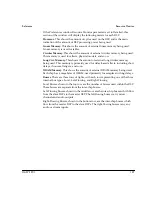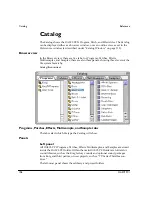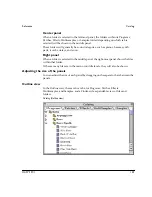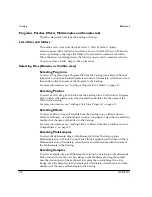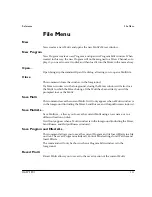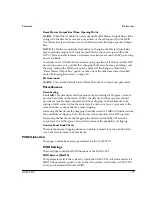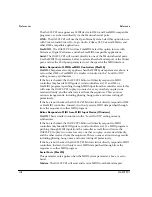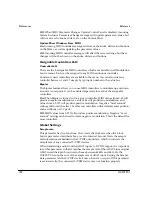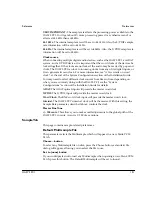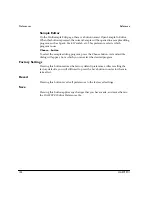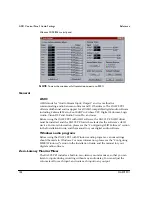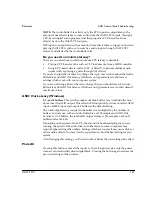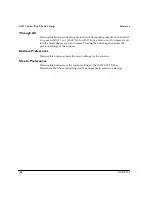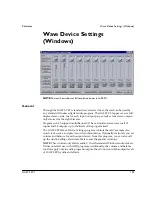
Preferences
Reference
120
OASYS PCI
English
Off.
When MIDI Parameter Changes Update Control Panel is disabled, incoming
System Exclusive Parameter Change messages will update parameter values, but
will not move the knobs, sliders, etc. on the Control Panel.
Update Mixer Windows From MIDI
On.
Incoming MIDI controller messages will move the knobs, sliders, and buttons
on the Mixer, as well as updating the parameter values.
Off.
Incoming MIDI controller messages will affect the mixer settings, but these
changes will not be shown on the knobs, sliders, and buttons.
Assignable Controllers A-H
Controller A-H.
These are the 8 assignable MIDI controllers, which are available in all Modulation
Source menus. Each can be assigned to any MIDI continuous controller.
Commonly used controllers are available in the menu. You can also enter any
controller between 1 and 97 simply by typing its number in the value box.
Bipolar
The bipolar feature allows you to use MIDI controllers to modulate up and down
around a center point. It can be enabled separately for each of the assignable
controllers.
On.
When Bipolar is turned on for a given controller, MIDI values from 0-63 will
produce negative modulation, a value of 64 will produce no modulation, and
values from 65-127 will produce positive modulation. Negative “mod amount”
settings will invert the effect. Use this for controllers with a default center position,
such as ribbons or X-Y pads.
Off.
MIDI values from 0-127 will produce positive modulation. Negative “mod
amount” settings can be used to create negative modulation. This is the default for
most controllers.
Global Settings
Sample rate
This parameter has two functions. First, it sets the clock rate when the Clock
Source parameter, described above, is set to Internal. Second, it sets the sample
rate information embedded in the S/PDIF output data, which in turn sets the
sample rate of any connected S/PDIF devices.
When transferring audio from the ADAT inputs to S/PDIF output, it is important
to set this parameter so that it matches the sample rate of the ADAT. Since original
ADATs used their pitch controls to choose between 48kHz and 44.1kHz, the
OASYS PCI cannot be sure of the sample rate of ADAT input. Setting the Sample
Rate parameter lets the S/PDIF device know what rate to expect. If this parameter
is set incorrectly, the connected S/PDIF device may not function properly.
Summary of Contents for Soundlink DRS OASYS PCI
Page 4: ...iv OASYS PCI English ...
Page 5: ...Introduction OASYS PCI 1 Introduction ...
Page 9: ...Using the OASYS PCI OASYS PCI 5 Using the OASYS PCI ...
Page 63: ...Using the OASYS PCI Working With Files OASYS PCI 59 File and folder organization ...


